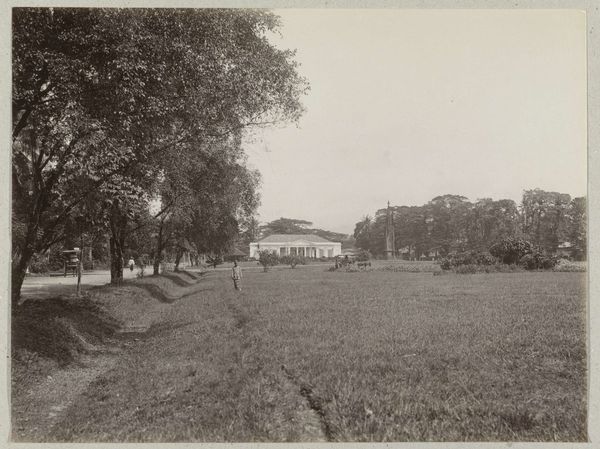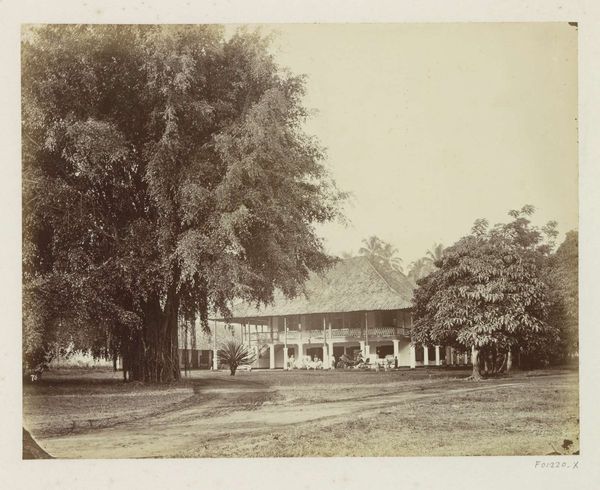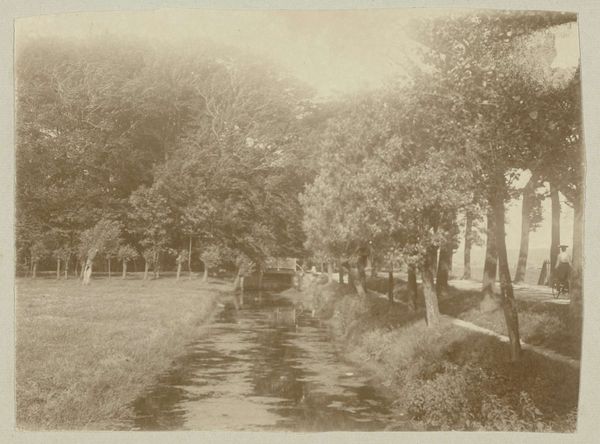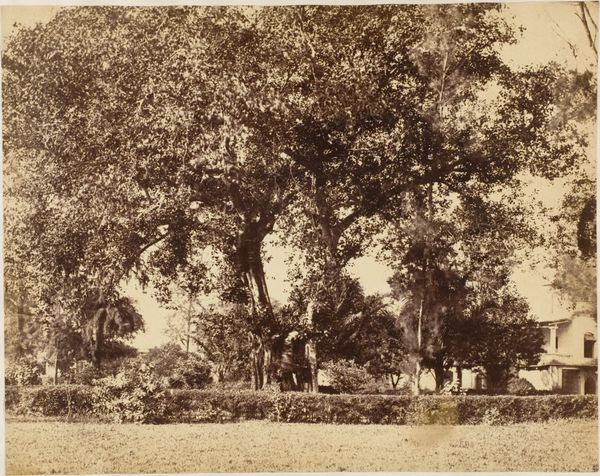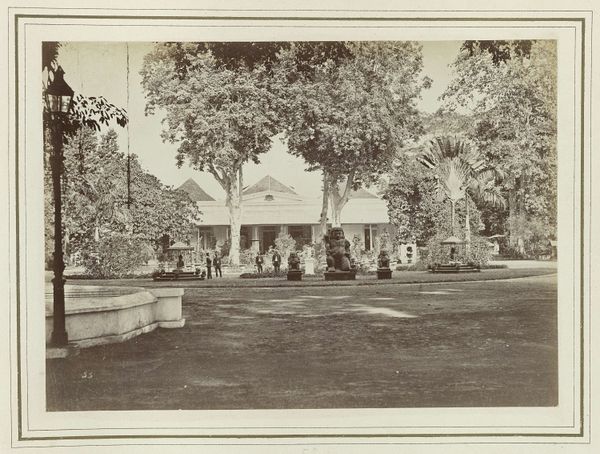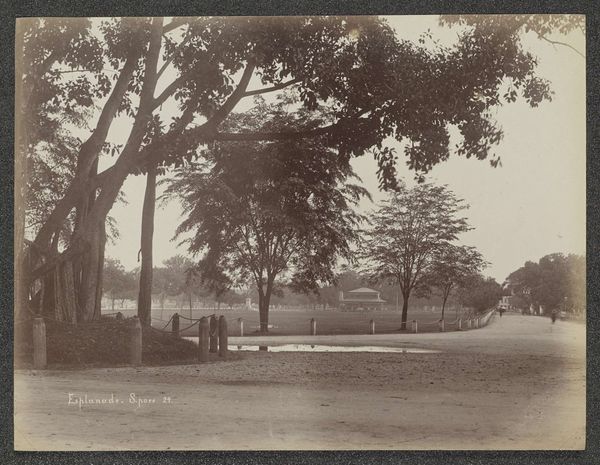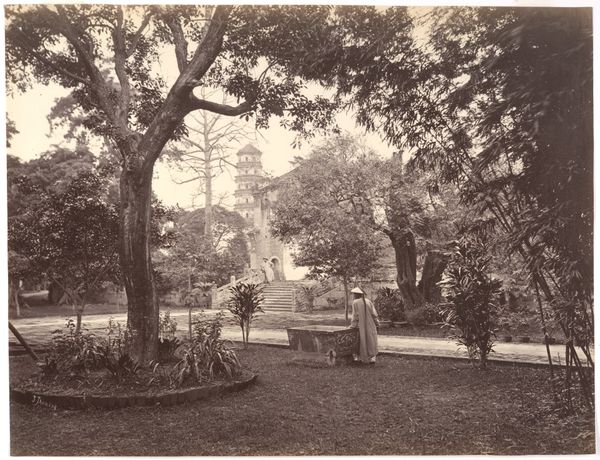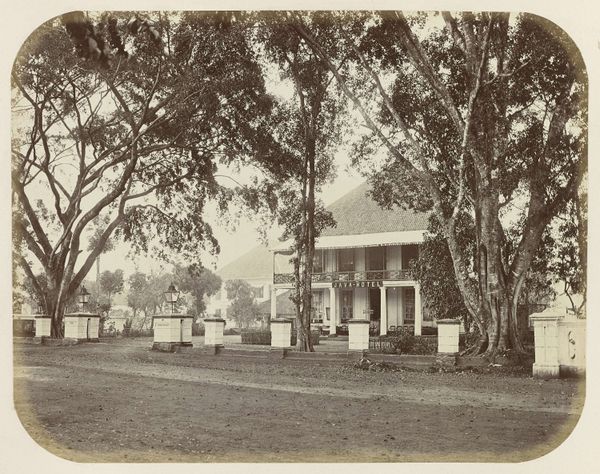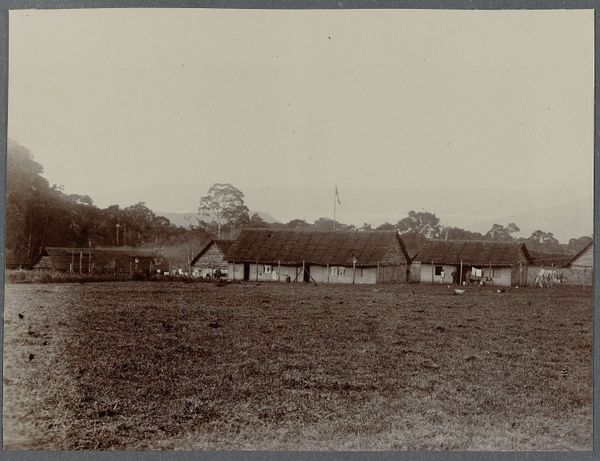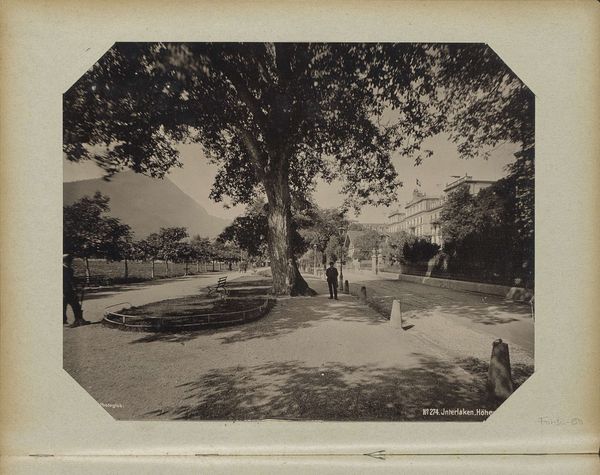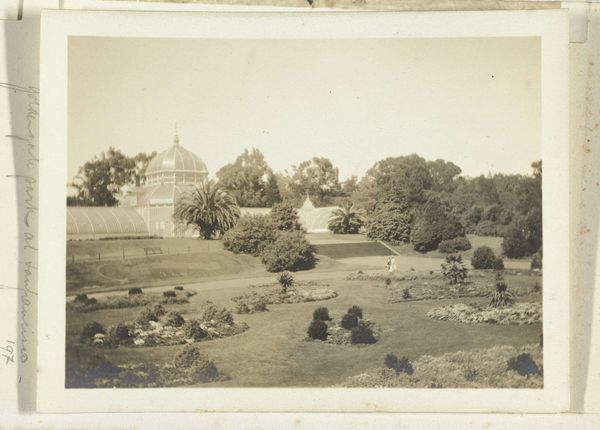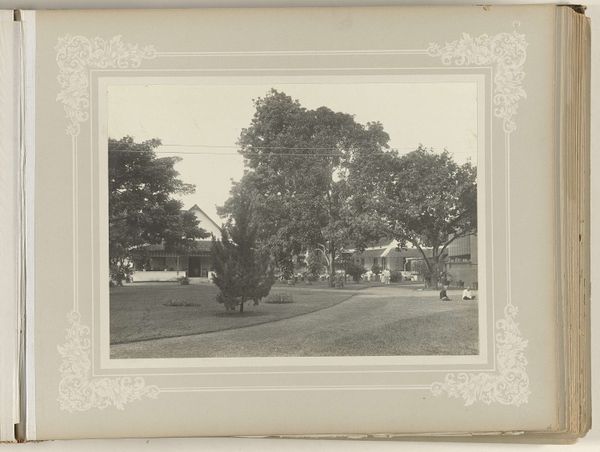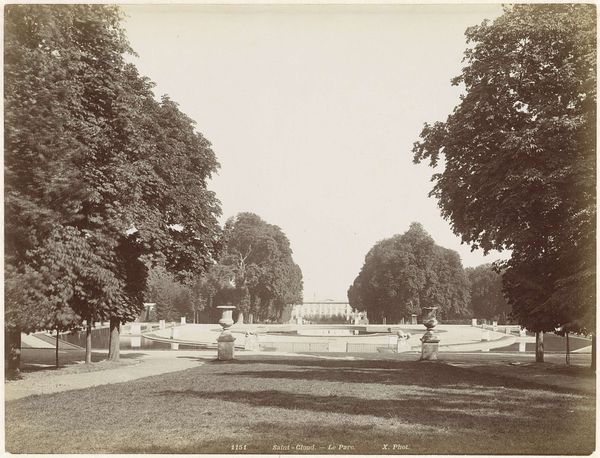
photography, gelatin-silver-print
#
landscape
#
indigenism
#
archive photography
#
photography
#
historical photography
#
gelatin-silver-print
#
post-impressionism
#
realism
Dimensions: height 150 mm, width 210 mm
Copyright: Rijks Museum: Open Domain
Curator: Before us, we have "Huis aan een laan," which translates to "House on a Lane," a gelatin-silver print photograph created in 1886 by Kassian Céphas. It’s currently held here at the Rijksmuseum. Editor: My immediate reaction is a sense of quietude, a melancholic stillness. The photograph captures a somewhat obscured building set back amongst a dense collection of trees, emphasizing this visual experience as somehow… withdrawn. Curator: Céphas, a Javanese photographer, was a pioneer in documenting the landscapes and architecture of Indonesia during the colonial period. This work aligns with a broader movement toward Realism, yet the atmosphere leans into something beyond objective documentation, as you noted. Editor: Precisely. What I find compelling is the contrast. While the photo aligns with a colonial-era interest in cataloging and representing the "exotic" other, there's a undeniable human element present that surpasses simple reportage. The very soft lighting flattens the tone almost universally to shades of grey. It really evokes the loneliness of imperialism. Curator: Indeed, that melancholy permeates. It is difficult to determine with such scarcity of tones the exact character or mood the photograph tries to depict. Though there seems to be no interaction occurring on the road at all. Editor: Considering Céphas’ position as a local photographer during a time of Dutch colonial rule, it's crucial to recognize the nuances in his representation. Are we, perhaps, looking at a subtle act of resistance? This image feels far from the power and authority often associated with colonial representations of property and ownership. Curator: It's an interesting proposition. We might perceive symbolic intent, suggesting something like a loss of self-possession for a community struggling to maintain ties with the land, as so often happens during intense urbanization efforts. Yet without other symbolic touchstones in evidence here, such ideas remain rather abstract, or speculative, though deeply important to the experience. Editor: I agree. While we can't definitively declare Céphas’ intent, interpreting the work through an anti-colonial lens provides another valid layer. This photography encapsulates not just a time and place, but also the layered psychological landscape of those who inhabited it. Curator: And in capturing that liminal psychological terrain through material objects in relation, Kassian Cephas’ "House on a Lane" succeeds as an historical archive in the truest sense. Editor: Definitely, Kassian Céphas presented a landscape that transcends simple visual representation to really engage on questions of socio-historical position, allowing his work to live on meaningfully.
Comments
No comments
Be the first to comment and join the conversation on the ultimate creative platform.
